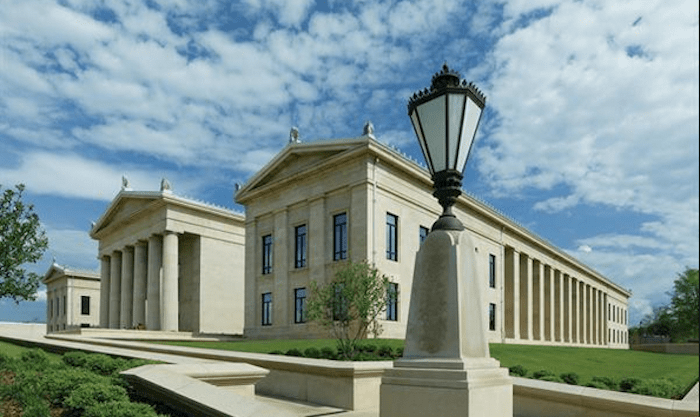Search Posts
Recent Posts
- Vinny Paz to be inducted TODAY into the International Boxing Hall of Fame – CES Boxing June 7, 2025
- In the News… quick recap of the week’s news (6.7.25) June 7, 2025
- Burn with Kearns: Strong without the spend: How scraps became strength tools – Kevin Kearns June 7, 2025
- Rhode Island Weather for June 7, 2025 – Jack Donnelly June 7, 2025
- How to advocate for threatened properties: The Heritage Alliance of Pawtucket June 7, 2025
Categories
Subscribe!
Thanks for subscribing! Please check your email for further instructions.

Making Federal Buildings Beautiful Again
By David Brussat, Architecture Here and There
A provocative debate has broken out over a draft proposal to return classical design to the heart of federal architecture, especially in our nation’s capital. The title of the draft executive order, “Making Federal Buildings Beautiful Again,” leads with its chin, and is a product of the Trump administration, so it is no surprise that ranks of establishment architects have stumbled over each other to criticize the proposal.
Most critics pose their case against the order upon the credo of diversity, seemingly innocent of the idea that the draft order itself is a response to decades over which diversity has been purged from the federal architectural palatte. Classicism has evolved over thousands of years, with builders ever seeking a better way to frame the corner of a columniated portico or to develop a leak-proof roof. It is inherently diverse, although most critical responses to the order seek to “scare” readers with the image of countless Parthenons marching down endless Washington boulevards.
Classical architecture was chosen by Washington and Jefferson to represent the virtues of the new nation, based on Athenian democracy and republican Rome. In the early 20th century, the founding European modernists created an architecture in which most people would be cogs in cities catering to socialist and authoritarian principle, and then brought it to America. Having tossed the toolbox of beauty developed over centuries, the style was and always has been generally unpopular, and, in order to compete, sought the eradication of old architectural styles. Most architects practicing today have forgotten this, or ignore it, but it is an atavistic feature, not a bug, of what was at first widely known as the International Style.
Virtually all federal buildings erected today are modernist, and have been for three-quarters of a century. Classical and traditional architecture have been frowned upon since the post-war era by the General Services Administration, which oversees the design, construction and maintenance of federal offices and monuments throughout the country. The proposed Trump order would specifically discourage, if not ban, modern architecture. To most people, this looks like a long-overdue corrective. The federal government was the last segment of U.S. society to abandon tradition in its approach to architecture, and it would be pleasingly ironic were it to be the first to re-embrace styles preferred by most American citizens. That would make sense in a democracy.
A federal courthouse in Tuscaloosa, Ala., completed a few years ago, is one of the very few major works of classical design to be sponsored by the GSA in decades. It is pictured atop this post. Admit that you’ve not seen much of its caliber in eons.
A draft order is several stages away from an accomplishment. During the administration of George W. Bush, classicist professor Thomas Gordon Smith of Notre Dame’s school of architecture was nominated to be the GSA’s chief architect. Heads exploded among the architectoriate, and the nomination was swiftly withdrawn. It looks as if the usual suspects are trying to gin up a similar campaign, which includes trying to sully the reputations of fine organizations such as the National Civic Art Society, which has been involved the the generation of the draft order.
Should there be an official style? Probably not, but under the circumstances, where an elite establishment has dictated federal style for generations, some sort of pushback is in order. If the system of doling out major architectural commissions reflected a market approach to economic choice, there would be no need for an “official” style. But there has been an official style as long as most people can remember, and it has uglified cities and towns since time immemorial. A federal boost for classicism would not reverse that instantly, of course, but it would be a long-overdue start at reintegrating beauty and civility into a field where education, journalism, firms and every other aspect of city making have been the fiefdom of the few, to the dismay of the many.
I will return to this discussion again, you may be sure. I have been wondering whether the Donald would play a role in architecture. Here is my Nov. 9, 2016 post “Vote’s “style wars” tea leaves.”
Photo: Federal Building and Courthouse in Tuscaloosa, Ala. (Architect Magazine)

My freelance writing and editing on architecture and others addresses issues of design and culture locally and globally. I am a member of the board of the New England chapter of the Institute of Classical Architecture & Art, which bestowed an Arthur Ross Award on me in 2002. I work from Providence, R.I., where I live with my wife Victoria, my son Billy and our cat Gato. If you would like to employ my writing and editing to improve your work, please email me at my consultancy, dbrussat@gmail.com, or call (401) 351-0457 https://architecturehereandthere.com/
